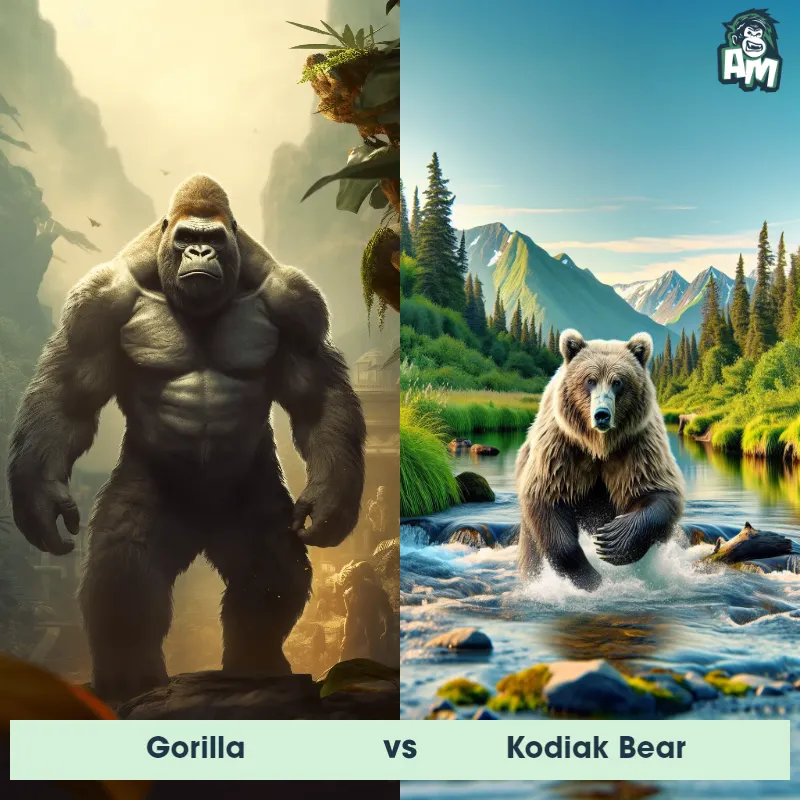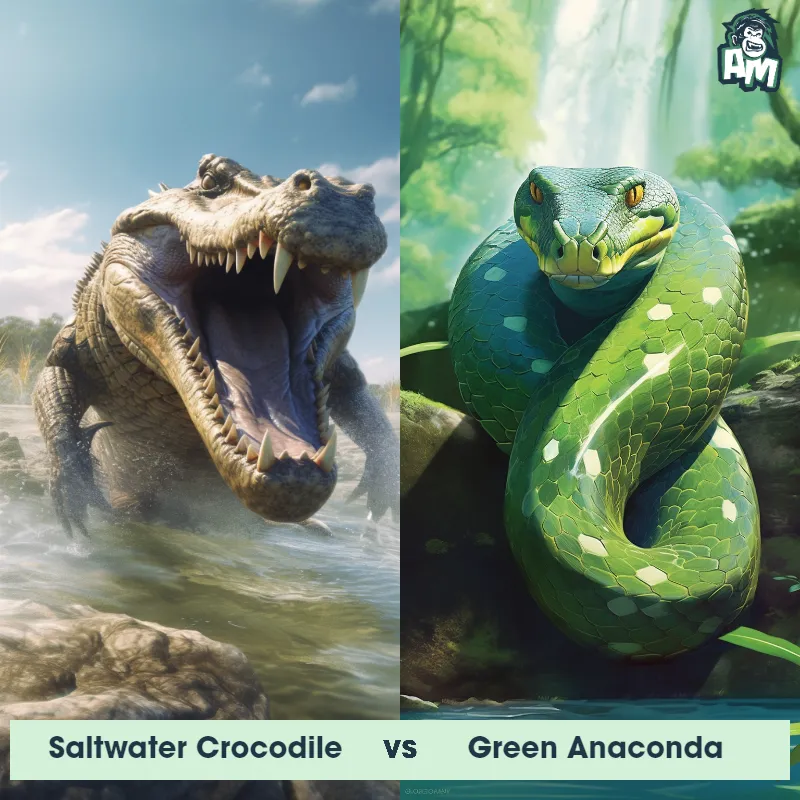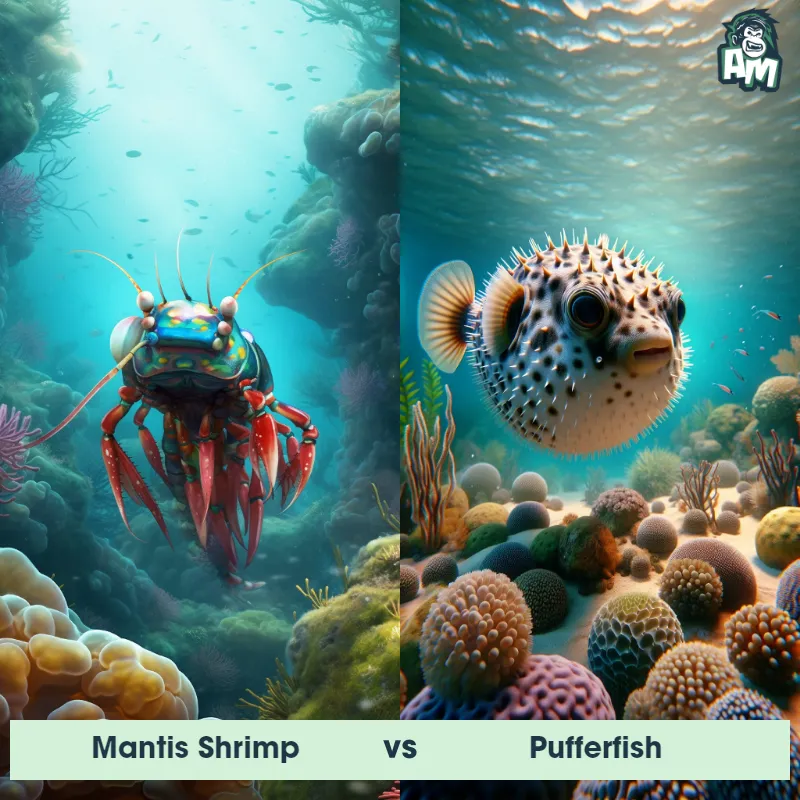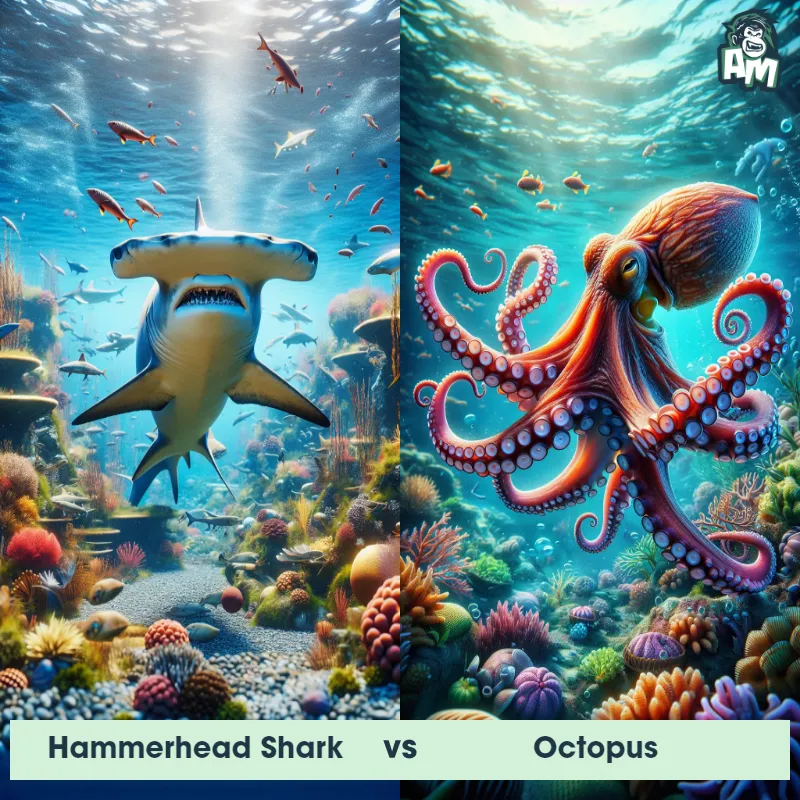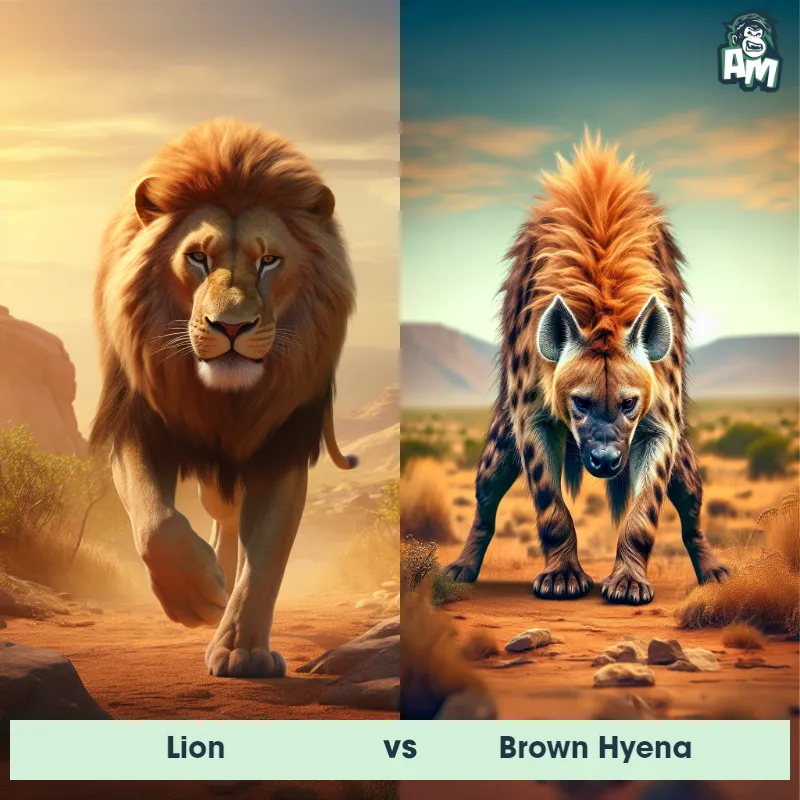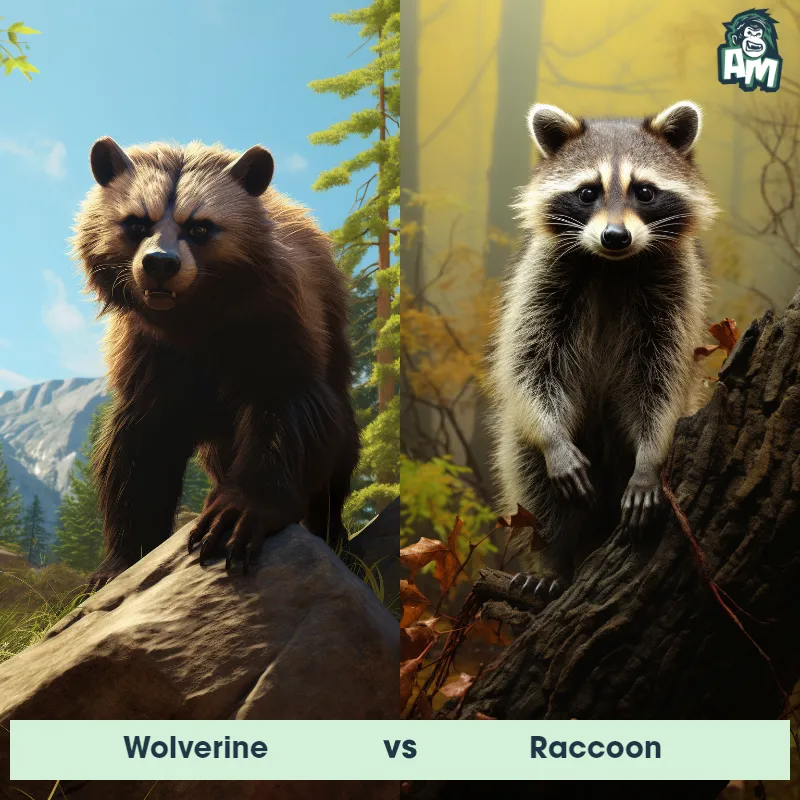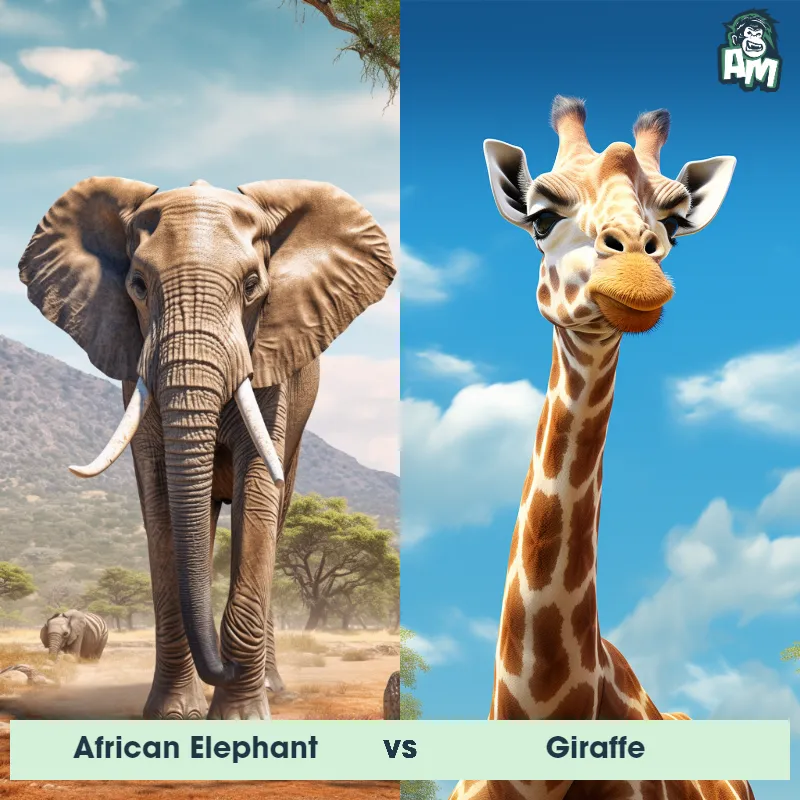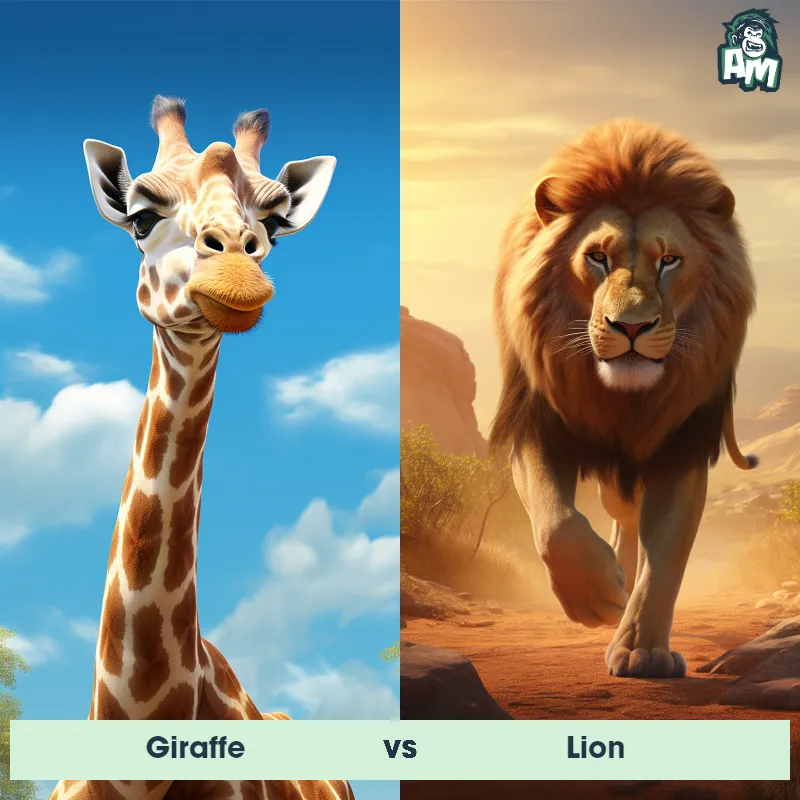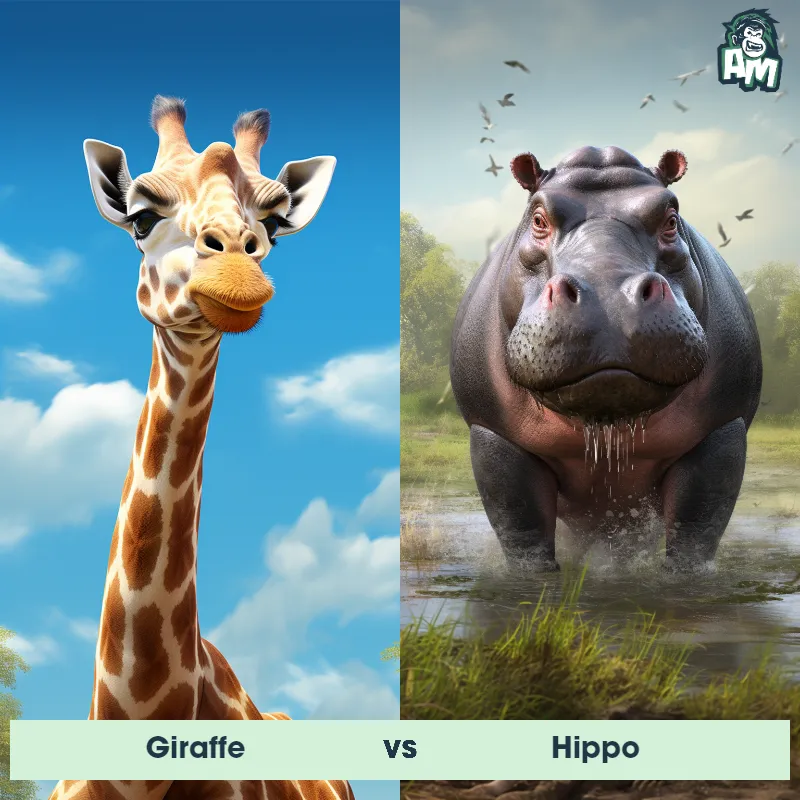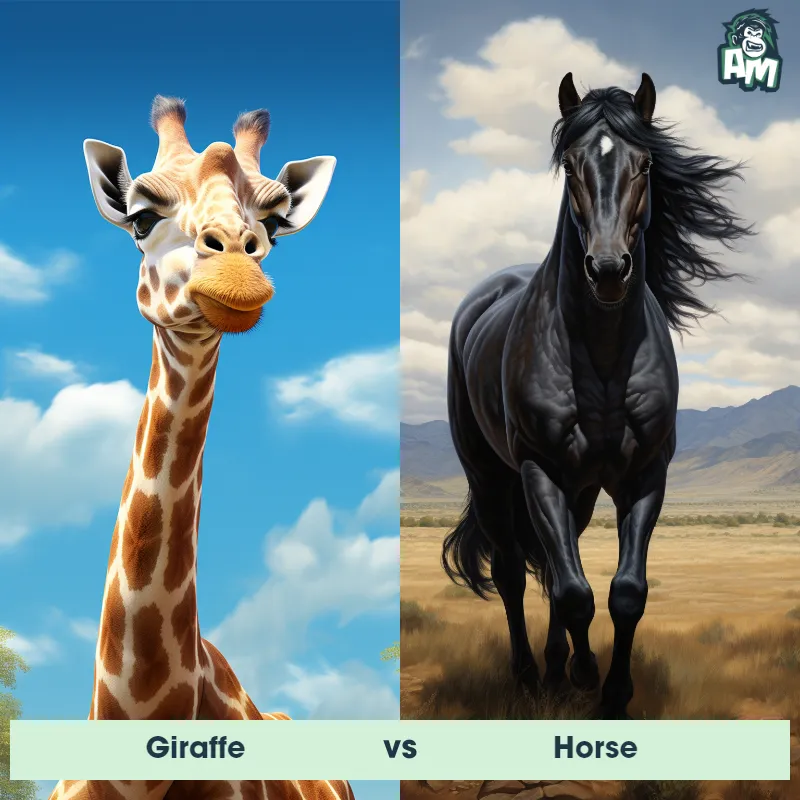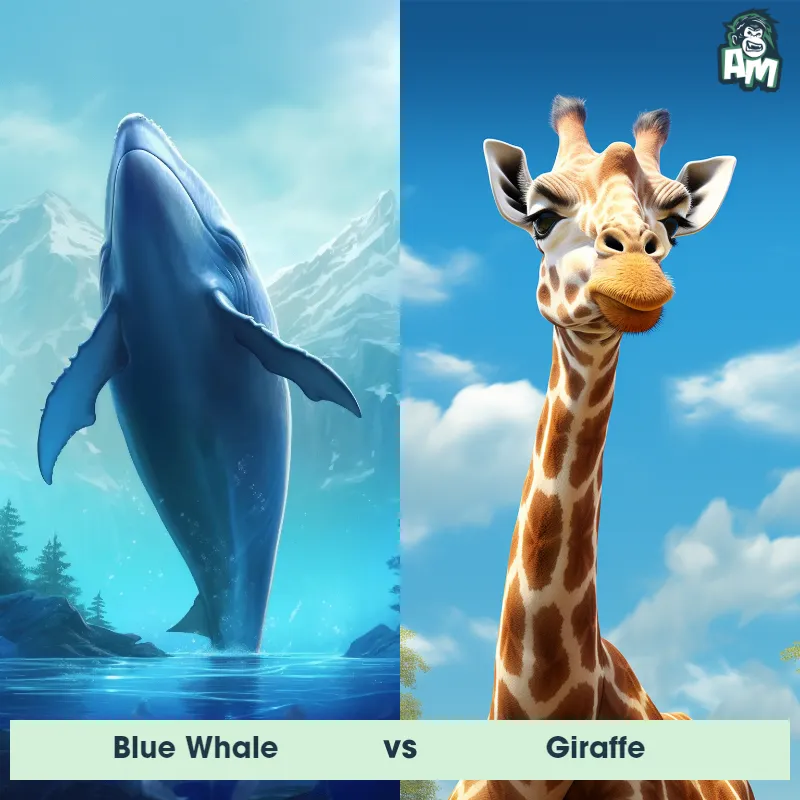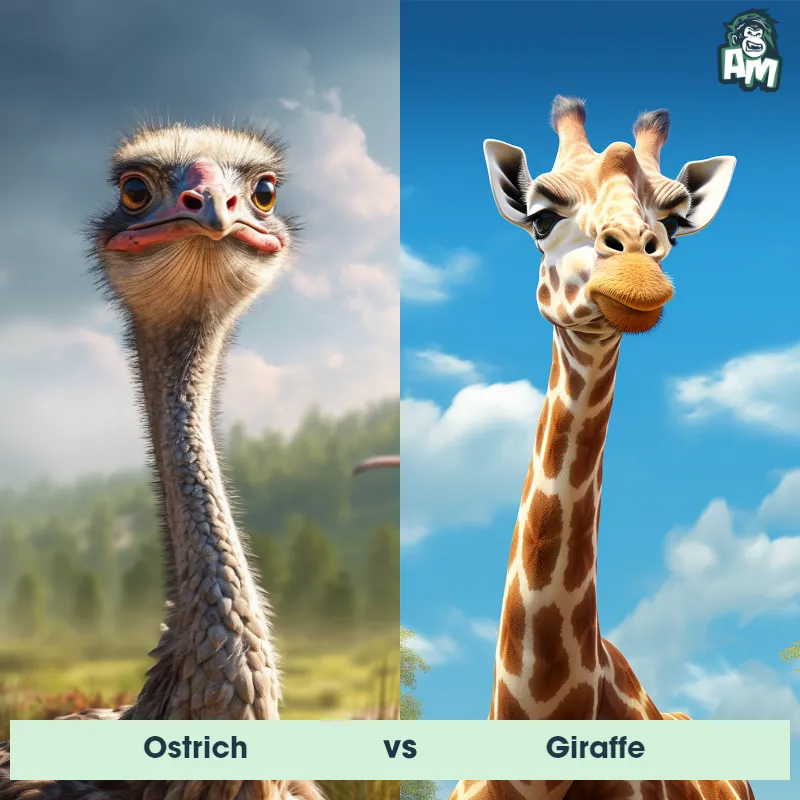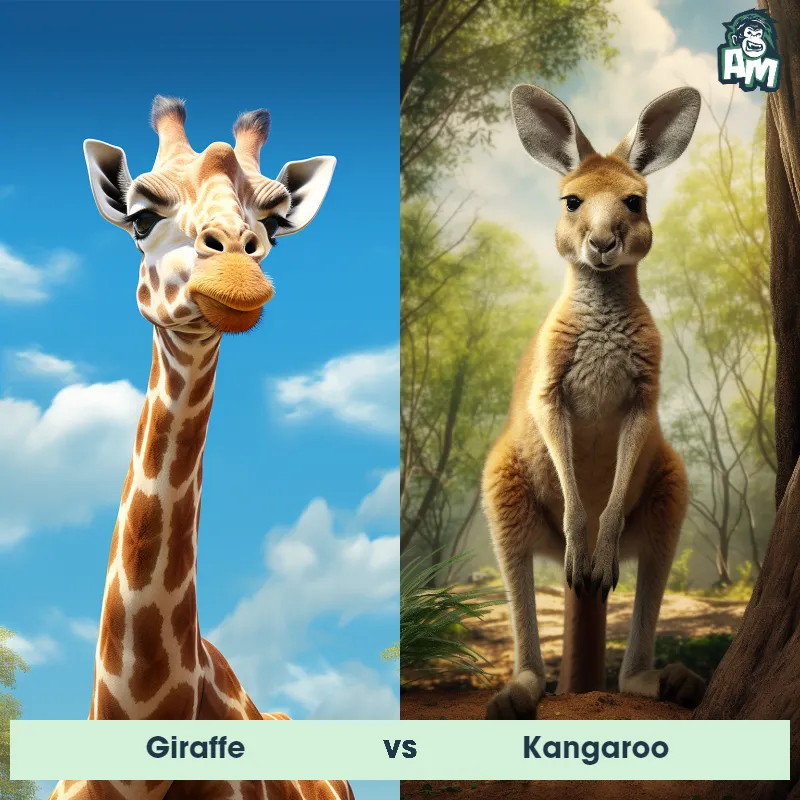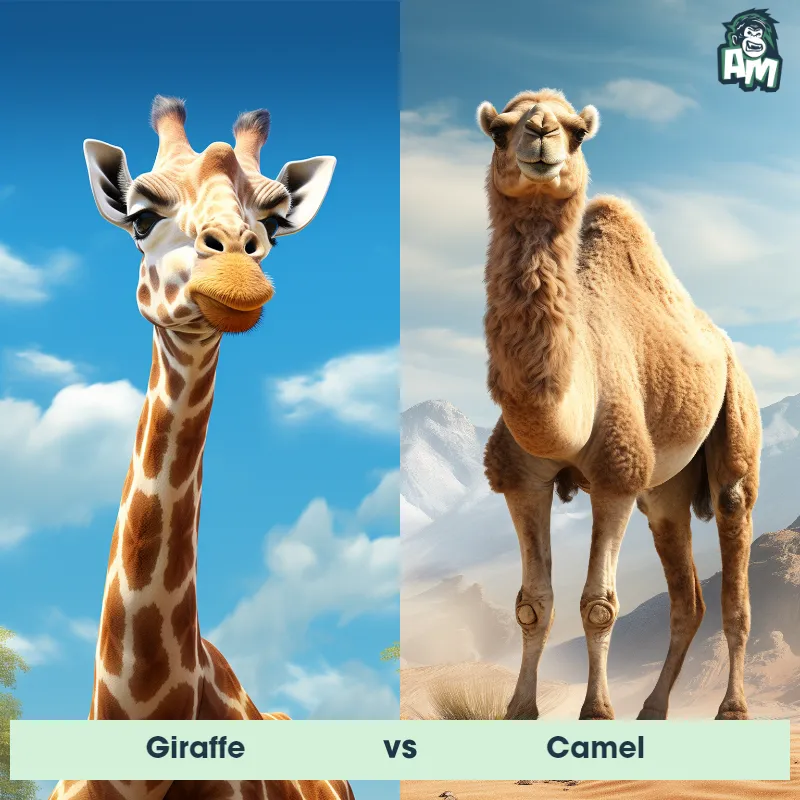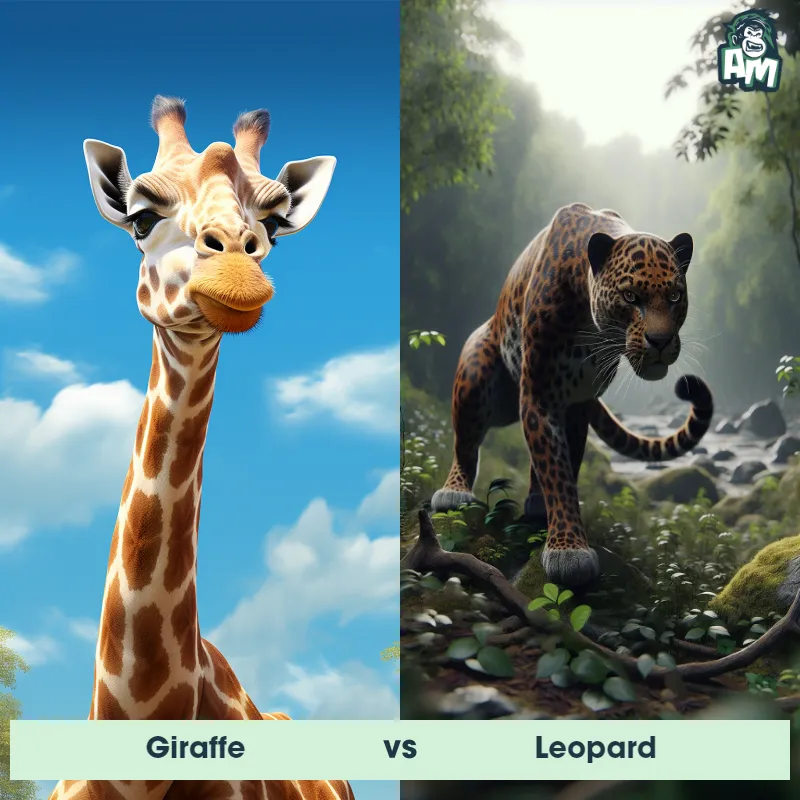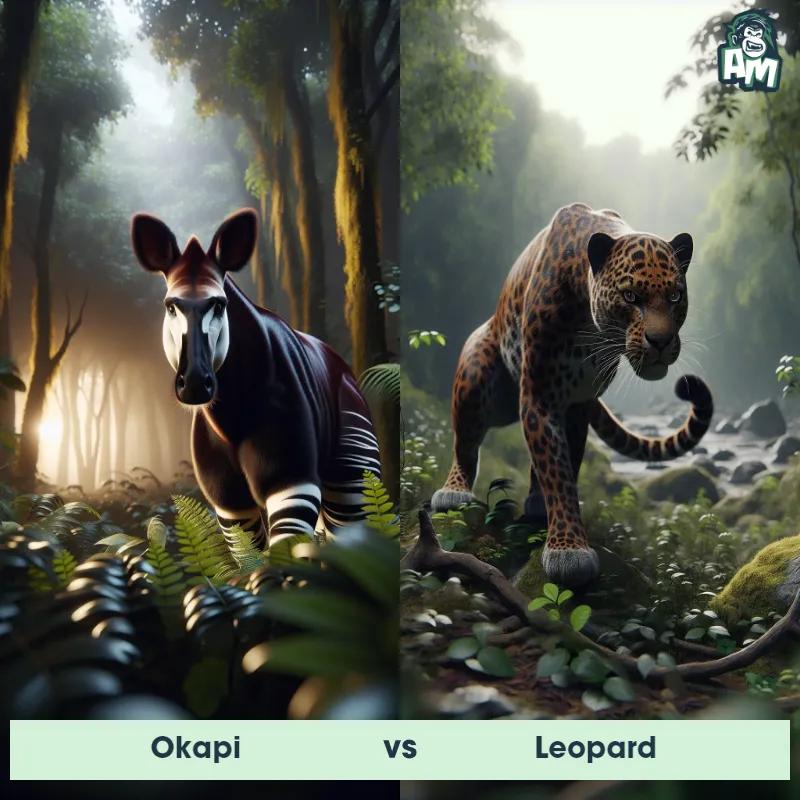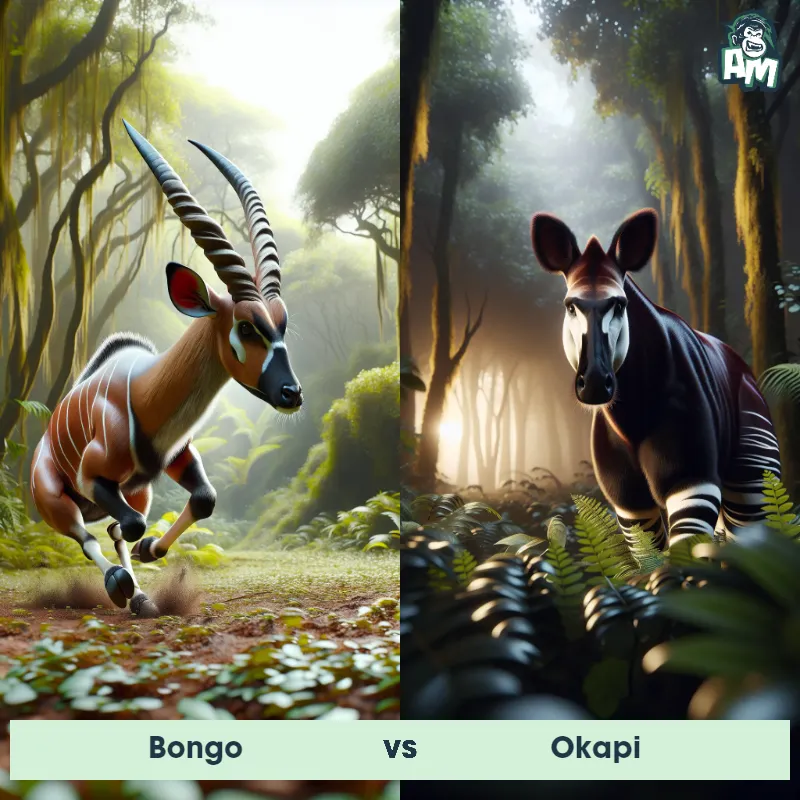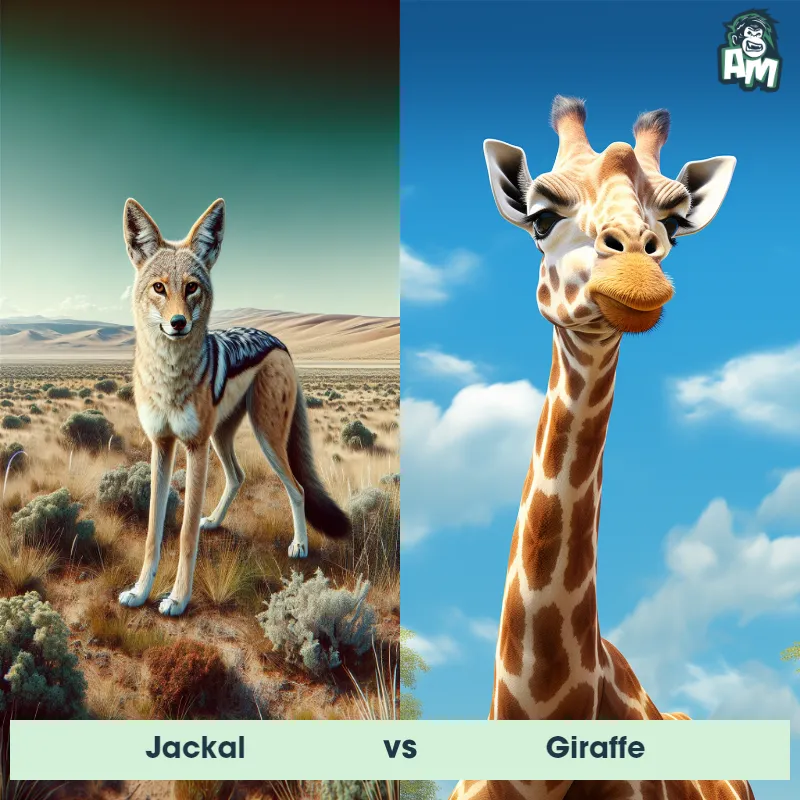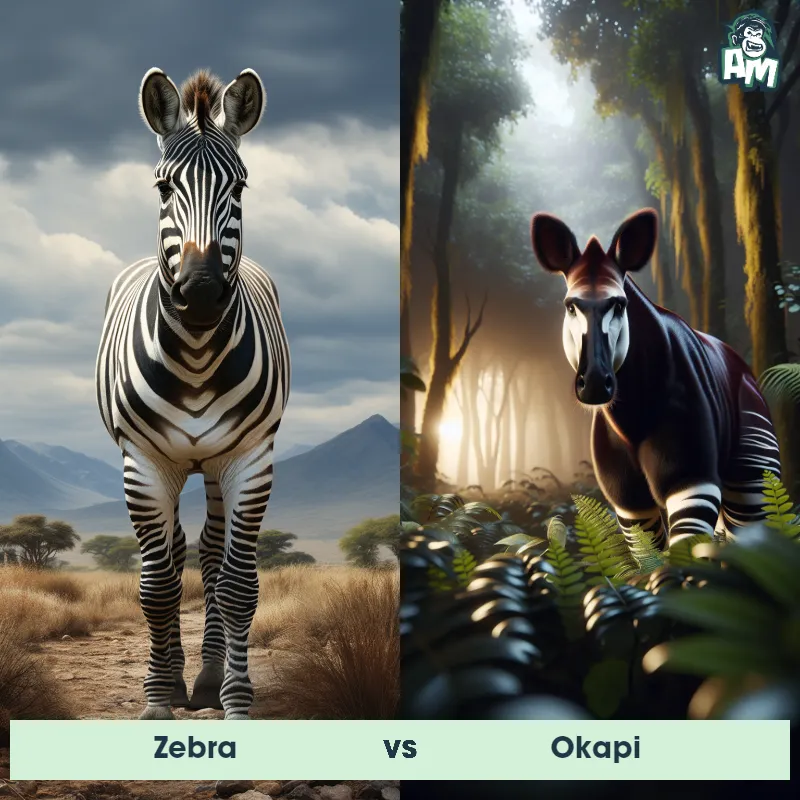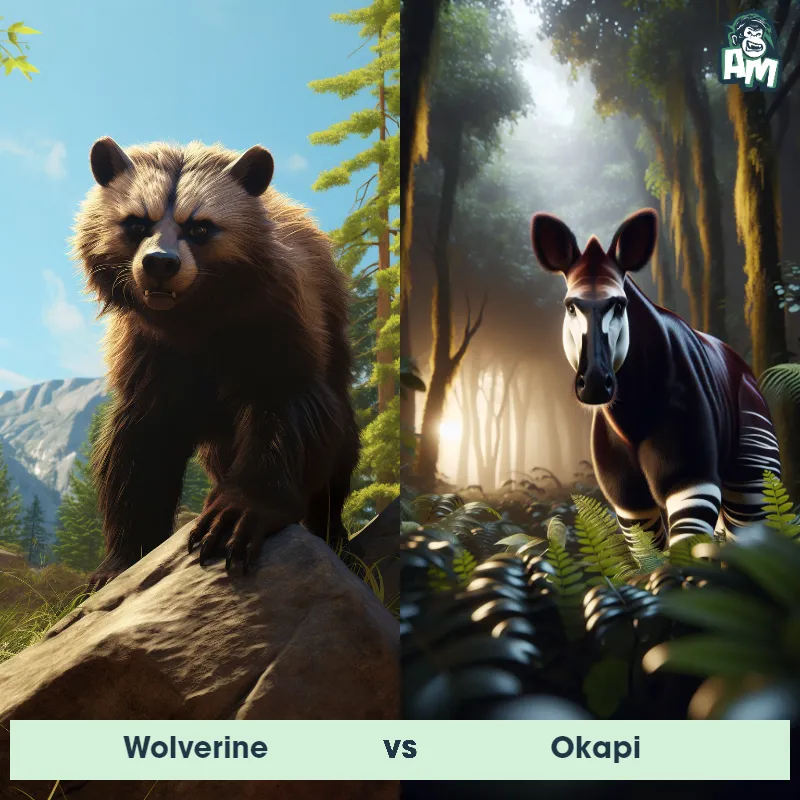Giraffe vs OkapiSee Who Wins

Ladies and gentlemen, welcome to this thrilling matchup between two magnificent creatures! In the left corner, weighing in at an impressive 2,600 pounds, we have the towering Giraffe. And in the right corner, standing at a modest 8 feet tall, let's give it up for the agile Okapi!
Contender 1: Giraffe
The giraffe is a majestic, long-necked mammal known for its exceptional height, which makes it the tallest land animal in the world. Adult giraffes can reach heights of up to 18 feet. Their unique appearance is characterized by a patterned coat with patches varying in color from orange and brown to lighter hues. Giraffes have long legs, a sloping back, and a small hump on their shoulders. They are native to Africa, primarily found in savannahs and woodlands, where they graze on leaves, fruits, and flowers.
Fun Fact: Despite their long necks, giraffes have the same number of neck vertebrae as humans, which is seven. Each vertebra can be up to 10 inches long.
Contender 2: Okapi
The Okapi, also known as the "forest giraffe," is a unique and elusive animal found in the dense rainforests of central Africa. It has a striking appearance with a chocolate-brown body, white stripes on its hindquarters, and a long neck topped with small, rounded ears. Okapis have a sturdy build with slender legs and are roughly the size of a horse. They are known for their long, prehensile tongues that they use to strip leaves from trees and for the scent glands on their feet, which secrete a tar-like substance to mark their territories.
Fun Fact: One interesting fact about the Okapi is that it was discovered by the scientific community as recently as 1901, despite local African legends mentioning its existence for centuries.
Matchup Stats
| Giraffe | Okapi | |
|---|---|---|
| Size | Up to 18 feet tall (5.5 meters) | 5-6 feet (1.5-1.8 meters) at the shoulder |
| Weight | Up to 2,800 pounds (1,270 kilograms) | 440-770 pounds (200-350 kilograms) |
| Speed | 35mph (56km/h) | 37mph (60km/h) |
| Key Strength | Powerful kicks with their long legs | Agile and fast, capable of delivering powerful kicks |
| Biggest Weakness | Vulnerable when bending down to drink water | Vulnerable to neck and head attacks due to its long neck |
Current Votes
Giraffe vs Okapi
See Who Wins
View More Matches
Looking For More?
Similar Matches
Scientific Stats
| Giraffe | Okapi | |
|---|---|---|
| Scientific Name | Giraffa camelopardalis | Okapia johnstoni |
| Family | Giraffidae | Giraffidae |
| Habitat | Savannahs, grasslands, and open woodlands | Dense rainforests |
| Geography | Africa | Central Africa |
| Diet | Herbivorous, primarily leaves, fruits, and flowers | Herbivorous, feeds on leaves, fruits, and buds |
| Lifespan | 20 years - 25 years | 25 years - 30 years |
Key Differences between Giraffe and Okapi
- Body shape: Giraffes have a long neck and a slender body, with long, thin legs, whereas Okapis have a shorter neck, stocky body, and relatively shorter legs.
- Horns: Giraffes possess short, stout horns called ossicones covered in fur, while Okapis lack prominent horns, but males may have small, hair-covered bumps on their forehead.
- Habitat preference: Giraffes primarily inhabit open savannahs and grasslands, while Okapis are found in dense rainforests, preferring more secluded and forested habitats.
- Coloration: Giraffes have a characteristic orange-brown coat patterned with large dark spots, while Okapis have a reddish-brown coat with horizontal white stripes on their hind legs and rear-end.
- Size: Giraffes are much taller than Okapis, standing at an average height of 16 to 20 feet, while Okapis reach an average height of 6 to 7 feet.
- Facial features: Giraffes have a more elongated face, with large eyes and a short, tufted mane on top of their head, while Okapis have a compact face with smaller eyes and no mane.



